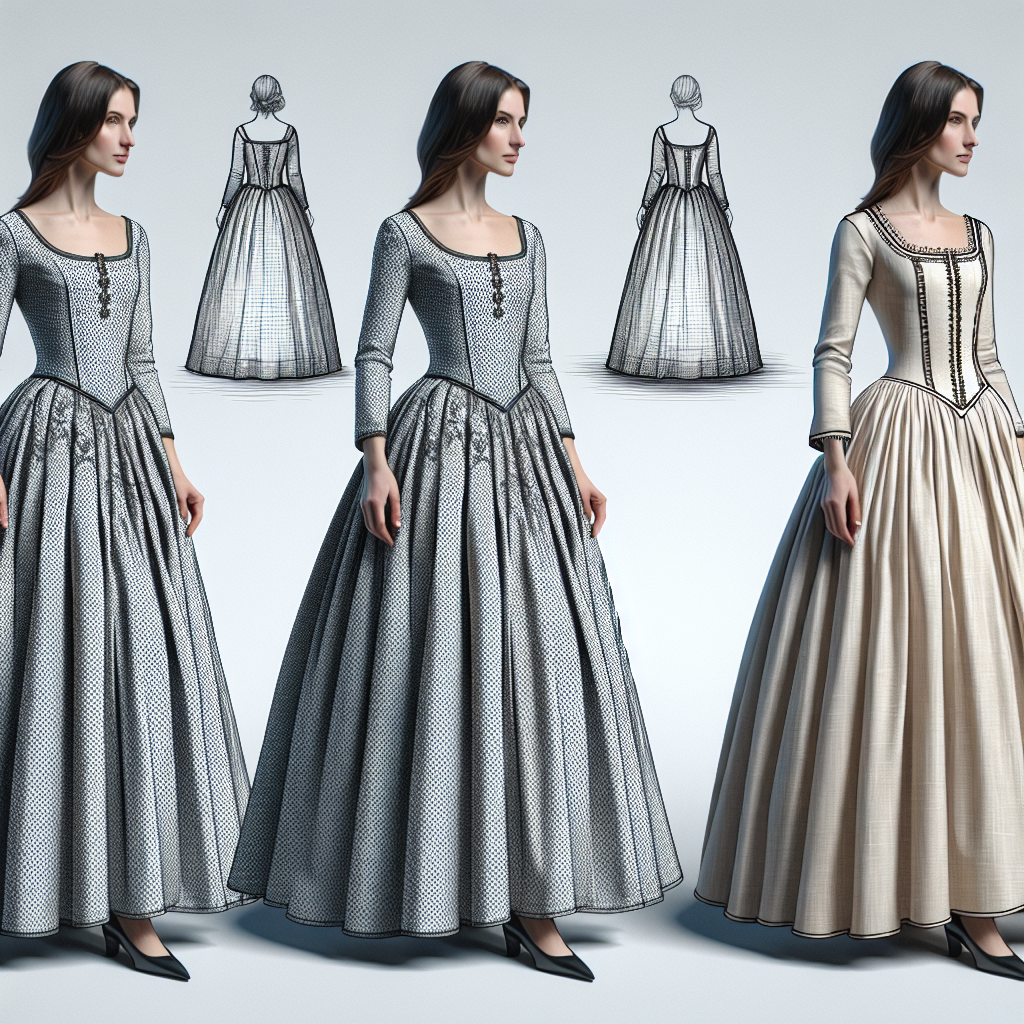Who, What, When, Where, and Why: The Timeless Kirtle
If history had a runway, the kirtle would undoubtedly be a showstopper, illustrating humanity's innovative spirit and ever-evolving wardrobe. This captivating garment, donned primarily by women in Western Europe from the early medieval period to the late Renaissance, was more than just a pretty piece of attire—it was an embodiment of social status, craftsmanship, and practicality. The kirtle enveloped the torso and fell gracefully down to the ankles, often bearing layers on layers of cultural significance. But why did the kirtle become such a staple in the annals of fashion history? Let’s weave through the threads of time to find out!
The Structural Genius of the Kirtle
The kirtle is essentially a one-piece dress that served as a fundamental garment in a woman's wardrobe. What initially seems like a simple piece of fabric turns out to be a cunning example of historical engineering and design. The basic structure of a kirtle could be described as a fitted, long-sleeved bodice attached to a full skirt. What really set it apart was its versatility—it could be worn under a gown or on top of a chemise, changing how it functioned within an outfit.
Constructed out of wool, linen, or silk, the choice of fabric would often depend on one's social standing and available resources. Consider this: in the bustling markets of medieval towns, the variegated hues of wool kirtles worn by peasants contrasted with the silk and damask options flaunted by noblewomen. This clothing was more than just protection against the elements—it was a declaration of identity and standing.
A Garment for All Seasons
One of the most exciting aspects of studying historical fashion is understanding how our ancestors accommodated their wardrobe to everything life threw at them. The kirtle exemplifies this adaptability. In colder climates, a heavier wool kirtle might be layered with a mantle or cloak, providing much-needed warmth against biting winds. As temperatures rose, lighter linen kirtles offered breathable comfort.
Modern reproductions of kirtles found in historical reenactments and Renaissance fairs show how practical and diverse this garment could be. The kirtle acted as an early form of a "capsule wardrobe" piece around which other clothing items would revolve. In contemporary terms, it was a fashionista’s base layer upon which creative, seasonal adaptations could be mounted.
The Stitch in Time and the Craftsmanship of the Kirtle
Let’s not forget the unsung heroes behind these garments—the artisans who brought them to life. Crafting a kirtle required meticulous skill and an understanding of anatomy, to ensure a comfortable yet stylish fit for the wearer. Complex patterns, precise sewing techniques, and the ability to work with varying materials evince a level of expertise that remains admirable even today.
The sleeves and bodice would often be richly embroidered or lined with unique trims, adding distinctiveness to what might initially seem like a standardized garment. This added another level of personalization and artistry, allowing women to express themselves through their clothing in a society where their voices often went unheard.
Kirtles in Today's Mirror
Fast forward to our current world, and you might wonder: where does the kirtle fit into our fashion landscape? Intriguingly, fashion is cyclical, and the influence of such garments continues to ripple through modern designs. Apparel like the A-line dress, long-sleeved gowns, and even certain types of outerwear have traces of the kirtle’s DNA.
Moreover, television and cinema have reanimated the kirtle in new ways. Period dramas, historical documentaries, and fantasy settings are testament to the kirtle’s timeless appeal. Many contemporary designers are drawing inspiration from these age-old pieces to create outfits that reintroduce historical elegance with a modern twist.
Unraveling the Cultural Tapestry
The kirtle is more than just a footnote in the annals of fashion; it is a doorway to understanding socio-economic dynamics, gender roles, and the lives of those who wore it. This once-common item of clothing tells stories that span centuries and continents. In this way, fashion becomes a living history, a tangible link connecting us to our past.
In exploring the kirtle, we learn that clothing is not just about aesthetics but about identity, adaptation, and cultural expression. Our ancestors were not just dressing for the sake of covering themselves; they were participating in a broader narrative that we still contribute to today.
This rich history is a testament to humanity's endless curiosity and creativity—a constant reminder of our capacity to weave together art, science, and practicality into something as seemingly simple as a garment. So, if you find yourself flipping through historical fashion books, or maybe eyeing your next period drama binge, remember: the kirtle is not just a dress. It’s a story, stitched and worn proudly across time.

